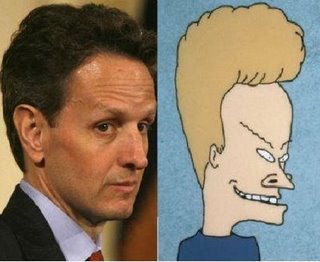
At the conclusion of a single, five-year term as Chair of the Federal Deposit Insurance Corporation (FDIC) Sheila Bair is calling it quits. One can hardly blame her. It must have been one hell of an experience: Warning about the hazards of the subprime mortgage market, being ignored and watching the consequences unfold . . . followed by a painful, weekly ritual, which gave birth to a website called Bank Fail Friday.
Bair’s tenure at the helm of the FDIC has been – and will continue to be – the subject of some great reading. On her final day at the FDIC (July 8) The Washington Post published an opinion piece by Ms. Bair in which she warned that short-term, goal-directed thinking could bring about another financial crisis. She also had something to brag about. Despite the efforts of Attorney General Eric Hold-harmless and the Obama administration to ignore the malefaction which brought about the financial crisis and allowed the Wall Street villains to profiteer from that catastrophe, Bair’s FDIC actually stepped up to the plate:
This past week, the FDIC adopted a rule that allows the agency to claw back two years’ worth of compensation from senior executives and managers responsible for the collapse of a systemic, non-bank financial firm.
To date, the FDIC has authorized suits against 248 directors and officers of failed banks for shirking their fiduciary duties, seeking at least $6.8 billion in damages. The rationales the executives come up with to try to escape accountability for their actions never cease to amaze me. They blame the failure of their institutions on market forces, on “dead-beat borrowers,” on regulators, on space aliens. They will reach for any excuse to avoid responsibility.
Mortgage brokers and the issuers of mortgage-based securities were typically paid based on volume, and they responded to these incentives by making millions of risky loans, then moving on to new jobs long before defaults and foreclosures reached record levels.
The difference between Sheila Bair’s approach to the financial/economic crisis and that of the Obama Administration (whose point man has been Treasury Secretary “Turbo” Tim Geithner) was analyzed in a great article by Joe Nocera of The New York Times entitled, “Sheila Bair’s Bank Shot”. The piece was based on Nocera’s “exit interview” with the departing FDIC Chair. Throughout that essay, Nocera underscored Bair’s emphasis on “market discipline” – which he contrasted with Geithner’s fanatic embrace of the exact opposite: “moral hazard” (which Geithner first exhibited at the onset of the crisis while serving as President of the Federal Reserve of New York). Nocera made this point early in the piece:
On financial matters, she seemed to have better political instincts than Obama’s Treasury Department, which of course is now headed by Geithner. She favored “market discipline” – meaning shareholders and debt holders would take losses ahead of depositors and taxpayers – over bailouts, which she abhorred. She didn’t spend a lot of time fretting over bank profitability; if banks had to become less profitable, postcrisis, in order to reduce the threat they posed to the system, so be it. (“Our job is to protect bank customers, not banks,” she told me.)
Bair’s discussion of those early, panic-filled days during September 2008 is consistent with reports we have read about Geithner elsewhere. This passage from Nocera’s article is one such example:
For instance, during the peak of the crisis, with credit markets largely frozen, banks found themselves unable to roll over their short-term debt. This made it virtually impossible for them to function. Geithner wanted the F.D.I.C. to guarantee literally all debt issued by the big bank-holding companies – an eye-popping request.
Bair said no. Besides the risk it would have entailed, it would have also meant a windfall for bondholders, because much of the existing debt was trading at a steep discount. “It was unnecessary,” she said. Instead, Bair and Paulson worked out a deal in which the F.D.I.C. guaranteed only new debt issued by the bank-holding companies. It was still a huge risk for the F.D.I.C. to take; Paulson says today that it was one of the most important, if underrated, actions taken by the federal government during the crisis. “It was an extraordinary thing for us to do,” Bair acknowledged.
Back in April of 2009, the newly-appointed Treasury Secretary met with similar criticism in this great article by Jo Becker and Gretchen Morgenson at The New York Times:
Last June, with a financial hurricane gathering force, Treasury Secretary Henry M. Paulson, Jr. convened the nation’s economic stewards for a brainstorming session. What emergency powers might the government want at its disposal to confront the crisis? he asked.
Timothy F. Geithner, who as president of the New York Federal Reserve Bank oversaw many of the nation’s most powerful financial institutions, stunned the group with the audacity of his answer. He proposed asking Congress to give the president broad power to guarantee all the debt in the banking system, according to two participants, including Michele Davis, then an assistant Treasury secretary.
The proposal quickly died amid protests that it was politically untenable because it could put taxpayers on the hook for trillions of dollars.
“People thought, ‘Wow, that’s kind of out there,’ ” said John C. Dugan, the comptroller of the currency, who heard about the idea afterward. Mr. Geithner says, “I don’t remember a serious discussion on that proposal then.”
But in the 10 months since then, the government has in many ways embraced his blue-sky prescription. Step by step, through an array of new programs, the Federal Reserve and Treasury have assumed an unprecedented role in the banking system, using unprecedented amounts of taxpayer money, to try to save the nation’s financiers from their own mistakes.
Geithner’s utter contempt for market discipline again became a subject of the Nocera-Bair interview when the conversation turned to the infamous Maiden Lane III bailouts.
“I’ve always wondered why none of A.I.G.’s counterparties didn’t have to take any haircuts. There’s no reason in the world why those swap counterparties couldn’t have taken a 10 percent haircut. There could have at least been a little pain for them.” (All of A.I.G.’s counterparties received 100 cents on the dollar after the government pumped billions into A.I.G. There was a huge outcry when it was revealed that Goldman Sachs received more than $12 billion as a counterparty to A.I.G. swaps.)
Bair continued: “They didn’t even engage in conversation about that. You know, Wall Street barely missed a beat with their bonuses.”
“Isn’t that ridiculous?” she said.
This article by Gretchen Morgenson provides more detail about Geithner’s determination that AIG’s counterparties receive 100 cents on the dollar. For Goldman Sachs – it amounted to $12.9 billion which was never repaid to the taxpayers. They can brag all they want about paying back TARP – but Maiden Lane III was a gift.
I was surprised that Sheila Bair – as a Republican – would exhibit the same sort of “true believer-ism” about Barack Obama as voiced by many Democrats who blamed Rahm Emanuel for the early disappointments of the Obama administration. Near the end of Nocera’s interview, Bair appeared taken-in by Obama’s “plausible deniability” defense:
“I think the president’s heart is in the right place,” Bair told me. “I absolutely do. But the dichotomy between who he selected to run his economic team and what he personally would like them to be doing – I think those are two very different things.” What particularly galls her is that Treasury under both Paulson and Geithner has been willing to take all sorts of criticism to help the banks. But it has been utterly unwilling to take any political heat to help homeowners.
The second key issue for Bair has been dealing with the too-big-to-fail banks. Her distaste for the idea that the systemically important banks can never be allowed to fail is visceral. “I don’t think regulators can adequately regulate these big banks,” she told me. “We need market discipline. And if we don’t have that, they’re going to get us in trouble again.”
If Sheila Bair’s concern is valid, the Obama administration’s track record for market discipline has us on a certain trajectory for another financial crisis.



Manifesto
For the past few years, a central mission of this blog has been to focus on Washington’s unending efforts to protect, pamper and bail out the Wall Street megabanks at taxpayer expense. From Maiden Lane III to TARP and through countless “backdoor bailouts”, the Federal Reserve and the Treasury Department have been pumping money into businesses which should have gone bankrupt in 2008. Worse yet, President Obama and Attorney General Eric Hold-harmless have expressed no interest in bringing charges against those miscreants responsible for causing the financial crisis. The Federal Reserve’s latest update to its Survey of Consumer Finances for 2010 revealed that during the period of 2007-2010, the median family net worth declined by a whopping thirty-eight percent. Despite the massive extent of wealth destruction caused by the financial crisis, our government is doing nothing about it.
I have always been a fan of economist John Hussman of the Hussman Funds, whose Weekly Market Comment essays are frequently referenced on this website. Professor Hussman’s most recent piece, “The Heart of the Matter” serves as a manifesto of how the financial crisis was caused, why nothing was done about it and why it is happening again both in the United States and in Europe. Beyond that, Professor Hussman offers some suggestions for remedying this unaddressed and unresolved set of circumstances. It is difficult to single out a passage to quote because every word of Hussman’s latest Market Comment is precious. Be sure to read it. What I present here are some hints as to the significance of this important essay:
For some insight as to why the American megabanks were never taken into temporary receivership, it is useful to look back to February of 2010 when Michael Shedlock (a/k/a“Mish”) provided us with a handy summary of the 224-page Quarterly Report from SIGTARP (the Special Investigator General for TARP — Neil Barofsky). My favorite comment from Mish appeared near the conclusion of his summary:
On January 29 2010, David Reilly wrote an article for Bloomberg BusinessWeek concerning the previous week’s hearing before the House Committee on Oversight and Government Reform. After quoting from Reilly’s article, Mish made this observation:
David Reilly began the Bloomberg Business Week piece this way:
That “secretive group” is The Federal Reserve of New York, whose president at the time of the AIG bailout was “Turbo” Tim Geithner. David Reilly’s disgust at the hearing’s revelations became apparent from the tone of his article:
At least in the Eurozone there is fear that the taxpayers will never submit to enhanced economic austerity measures, which would force the citizenry into an impoverished existence so that their increased tax burden could pay off the debts incurred by irresponsible bankers. In the United States there is no such concern. The public is much more compliant. Whether that will change is anyone’s guess.